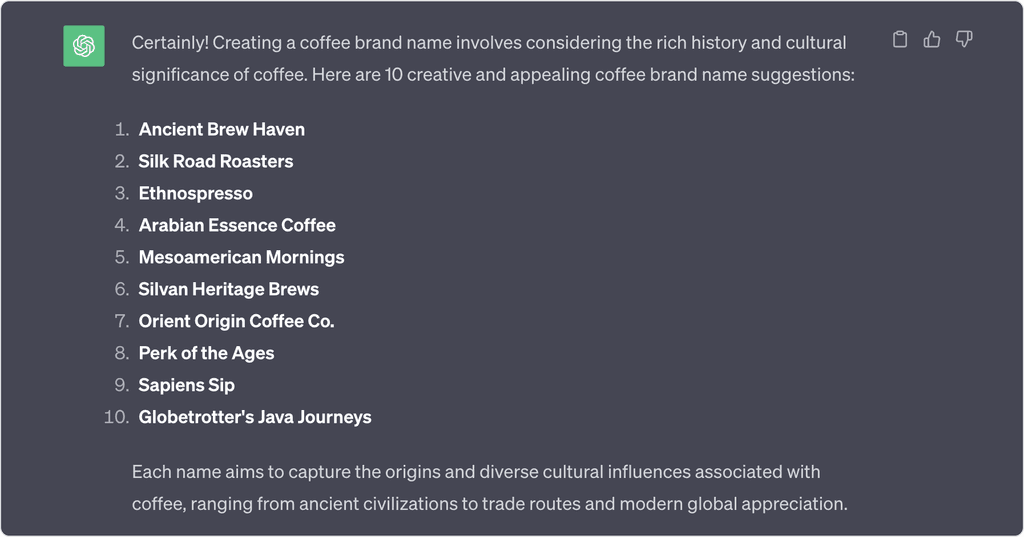ChatGPT
step 1
ChatGPT, which stands for Chat Generative Pre-trained Transformer, is a large language model-based chatbot developed by OpenAI and launched on November 30, 2022, which enables users to refine and steer a conversation towards a desired length, format, style, level of detail, and language. Successive prompts and replies, known as prompt engineering, are considered at each conversation stage as a context.

Chat GPT screenshot.
Prompt Engineering
My objective was to discover a name with a historical tie to the essence of coffee. Initially, I engaged ChatGPT to generate ten coffee brand name suggestions, considering the extensive historical knowledge about coffee. However, the names provided in the initial batch didn't resonate with me.
Consequently, I sought inspiration from a coffee podcast and devised the brand name independently. This name, "Coffee 51," draws inspiration from the famous Honoré de Balzac, who was reputed to consume a staggering 50 cups of coffee daily while he wrote. Intriguingly, he passed away at the youthful age of 51, hence the origin of the name. It's a testament to the enduring value of human creativity and intuition in branding.
Creating an effective prompt for ChatGPT, or any AI language model, requires certain considerations to ensure the desired output:
Clarity and Specificity: Clearly articulate what you want from the AI. Be as specific as possible about the information or assistance you need.
Contextual Information: Provide relevant context or background information to help the AI better understand your request.
Question Format: Formulate your prompt as a question if you are seeking a direct answer. Starting with "How," "What," "Why," or "Can you" can be effective.
Positive or Negative Reinforcement: If the AI isn't providing the desired response, you can give feedback by specifying whether the generated text is good or bad.
Desired Length: Indicate if you need a short and concise response or a more detailed explanation.
Tone and Style: Mention the tone or style you prefer for the response, whether it should be formal, casual, technical, or creative.
Structured Request: If you require a specific format, structure, or list, be sure to express this in your prompt.
Multi-step Questions: Break down complex queries into multiple, smaller questions to improve the AI's response accuracy.
Iterative Approach: Be prepared to refine and clarify your prompt based on the AI's initial responses.
Politeness and Respect: Maintain a respectful and polite tone in your prompts, as it encourages a more positive interaction.
By considering these elements when crafting a ChatGPT prompt, you can enhance the chances of receiving accurate and helpful responses from the AI.